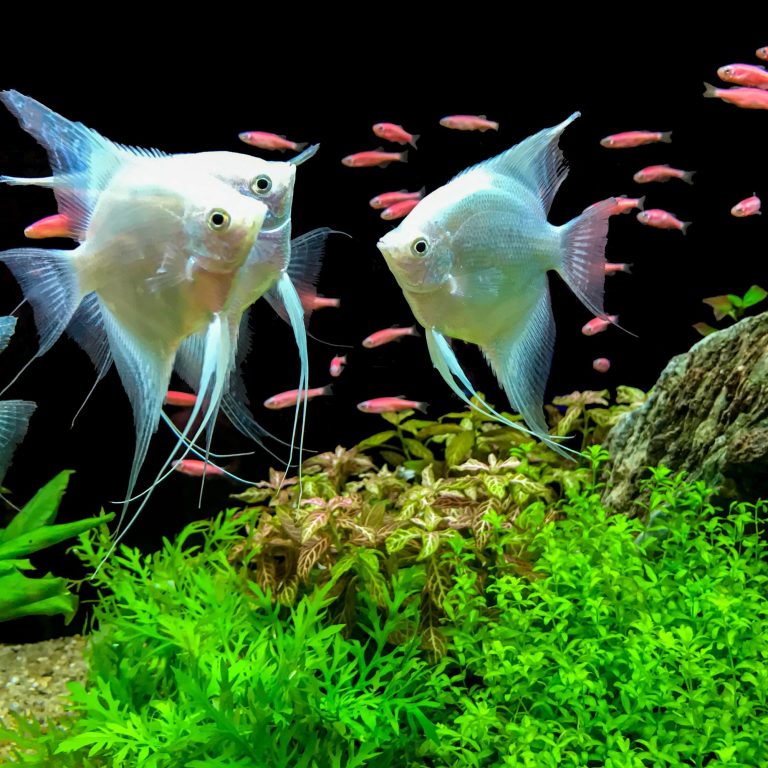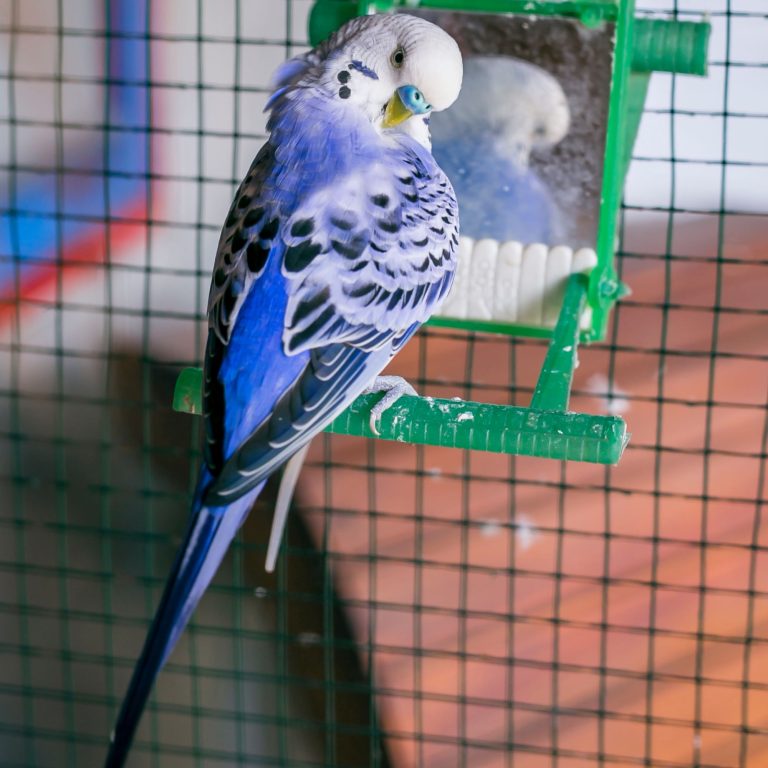Dive into the Future: Exploring Aquarium Monitoring Systems
The Future of Aquarium Monitoring
Are you ready to dive into the future of aquarium keeping? Say hello to aquarium monitoring systems! These innovative devices are revolutionizing the way we care for our aquatic friends. With advanced sensors, remote monitoring capabilities, and integration with mobile apps and smart devices, aquarium monitoring systems are taking fishkeeping to a whole new level of convenience and control.
Introducing Aquarium Monitoring Systems
Aquarium monitoring systems are comprehensive tools designed to monitor and track the vital parameters of your fish tank. These systems utilize a variety of sensors and technologies to measure important factors such as water parameters, equipment functionality, and even feeding schedules. By continuously monitoring these elements, aquarium monitoring systems help ensure the optimal health and well-being of your aquatic pets.
Why You Need an Aquarium Monitoring System
So, why should you consider investing in an aquarium monitoring system? The answer is simple: peace of mind. With an aquarium monitoring system in place, you gain real-time insights into the conditions of your fish tank, allowing you to identify and address any potential issues promptly.
By monitoring water parameters like pH levels, temperature, and ammonia levels, you can ensure that your fish are swimming in a safe and comfortable environment. Quick detection of any fluctuations or imbalances can help prevent stress, disease, and even fish loss. For more information on the importance of monitoring water parameters, check out our article on fish tank monitoring systems.
But it doesn’t stop there. Aquarium monitoring systems also keep an eye on the functionality of your filtration system, monitor lighting conditions, and even measure oxygen levels in the water. This comprehensive monitoring ensures that your aquarium equipment is running smoothly and that your fish have the ideal living conditions to thrive.
With the advent of remote monitoring and control, you can keep tabs on your fish tank from anywhere, anytime. Whether you’re at work, traveling, or simply relaxing on the couch, you can check in on your aquarium using your smartphone or tablet. Remote monitoring features provide real-time data and alerts, allowing you to take immediate action if any parameters go awry. To learn more about remote monitoring, visit our article on remote fish tank monitoring.
Aquarium monitoring systems also offer integration with mobile apps and smart devices, allowing you to conveniently access and manage your aquarium data. Mobile app integration provides a user-friendly interface for monitoring and controlling your fish tank, while compatibility with smart devices allows for seamless integration into your smart home ecosystem. For more details on the benefits of mobile app integration and smart device compatibility, check out our articles on smart fish tank devices and fish tank monitoring systems.
As you explore the world of aquarium monitoring systems, you’ll discover advanced features like automatic feeding systems, video monitoring and livestreaming, and alarms and notifications. These features not only enhance your convenience but also provide a deeper connection with your underwater companions. Stay tuned as we explore these exciting features in the sections to come!
Get ready to take your fishkeeping experience to new heights with the power of aquarium monitoring systems. These futuristic devices bring convenience, control, and peace of mind, ensuring that both you and your fish can enjoy a harmonious and thriving aquatic environment.
Monitoring Water Parameters
Keeping a close eye on the water parameters in your aquarium is vital for ensuring the health and well-being of your aquatic pets. By monitoring key water parameters such as pH levels, temperature, and ammonia levels, you can proactively address any issues and create a stable and thriving environment for your fish.
Importance of Water Parameters
Maintaining proper water parameters is crucial because even slight fluctuations can have a significant impact on the health of your fish. Different fish species have specific requirements when it comes to water conditions, so it’s essential to provide them with an environment that closely matches their natural habitat. Monitoring water parameters allows you to make necessary adjustments and prevent potential problems before they arise.
Monitoring pH Levels
pH levels in your aquarium play a significant role in the overall well-being of your fish. pH measures the acidity or alkalinity of the water. Different fish species have different pH preferences, and maintaining the appropriate pH range is essential for their health and survival. Using a fish tank pH monitor or pH sensor, you can regularly check and monitor the pH levels in your aquarium. This allows you to make any necessary adjustments to keep the pH within the optimal range for your fish. For more information on fish tank pH monitoring, check out our article on fish tank pH monitors.
Monitoring Temperature
Temperature is another critical parameter that needs to be monitored in your aquarium. Different fish species have different temperature requirements, and maintaining a stable and suitable temperature is essential for their overall health and behavior. Using a fish tank temperature monitor or temperature sensor, you can keep track of the temperature in your aquarium and ensure it remains within the ideal range for your fish. This helps to prevent stress, diseases, and other problems related to temperature fluctuations. To learn more about fish tank temperature monitoring, visit our article on fish tank temperature monitoring.
Monitoring Ammonia Levels
Ammonia is a toxic substance that can accumulate in your aquarium as a result of fish waste, uneaten food, and decaying organic matter. Elevated ammonia levels can be detrimental to fish health, causing stress, diseases, and even death. By monitoring the ammonia levels in your aquarium using an ammonia monitor or water quality sensor, you can detect any spikes or increases in ammonia concentration. This allows you to take prompt action to address the issue, such as performing water changes or adjusting the filtration system. For more information on monitoring ammonia levels in your fish tank, check out our article on fish tank ammonia monitors.
Regularly monitoring these water parameters and taking appropriate measures to maintain their optimal levels is vital for creating a healthy and thriving aquatic environment. Utilizing aquarium monitoring systems equipped with water parameter sensors ensures that you stay informed about the conditions in your aquarium, providing you with the knowledge and control to keep your fish happy and thriving.
Monitoring Equipment and Maintenance
To ensure the optimal health and well-being of your aquatic pets, it is crucial to monitor the equipment and maintenance of your aquarium. By keeping a close eye on filter functionality, lighting conditions, and oxygen levels, you can create a thriving aquatic environment.
Monitoring Filter Functionality
Your aquarium’s filter plays a vital role in maintaining water quality by removing impurities and ensuring proper circulation. Monitoring the functionality of your filter is essential to prevent any malfunctions that could impact the water conditions and the health of your fish.
Regularly inspect the filter for any signs of clogging or reduced flow. This can be done by checking the water flow rate and observing any unusual noises or vibrations. Additionally, monitoring the water level in your aquarium is crucial, as a low water level can affect the filter’s efficiency. Consider using a fish tank water level sensor to ensure that the water level remains within the optimal range.
Monitoring Lighting Conditions
Proper lighting is crucial for the well-being of your aquarium inhabitants, as it not only enhances their colors but also facilitates essential biological processes. Monitoring the lighting conditions ensures that your fish, plants, and corals receive the appropriate amount and spectrum of light.
Keep track of the lighting schedule and duration to maintain consistency. Consider using a smart fish tank device or timer to automate the lighting cycle. Regularly inspect the lighting fixtures for any signs of damage or malfunction, such as flickering bulbs or dim lighting.
Monitoring Oxygen Levels
Oxygen is vital for the survival of your fish and other aquatic organisms. Monitoring the oxygen levels in your aquarium helps ensure that your fish receive an adequate supply of oxygen for respiration.
To maintain optimal oxygen levels, ensure proper water circulation and aeration. Consider using an air stone or bubbler to increase oxygen exchange at the water surface. Additionally, regularly clean the air pump and check the air tubing for any blockages.
Monitoring the oxygen levels can be done using a wireless fish tank sensor or an aquarium monitoring system that provides real-time data. By keeping a close eye on the oxygen levels, you can promptly address any issues and take necessary measures to maintain a healthy aquatic environment.
By regularly monitoring the equipment and maintenance of your aquarium, you can address any issues promptly and create an optimal environment for your aquatic pets. Remember to refer to our articles on fish tank pH monitoring and fish tank ammonia monitoring for more information on maintaining water parameters and ensuring the well-being of your fish.
Remote Monitoring and Control
With the advancement of technology, aquarium monitoring systems now offer convenient remote monitoring and control features, allowing you to keep an eye on your aquarium from anywhere and take control of its various parameters. Let’s explore the remote monitoring and remote control features that these systems provide.
Remote Monitoring Features
One of the key benefits of aquarium monitoring systems is the ability to remotely monitor important parameters of your fish tank. These systems employ various sensors to provide real-time data on crucial water parameters, such as water level, pH levels, temperature, and ammonia levels. By accessing the system’s mobile app or web interface, you can conveniently view this data and keep track of your aquarium’s overall health.
- Water Level: A fish tank water level sensor can alert you if the water level falls below a certain threshold, ensuring the well-being of your aquatic friends. Check out our article on fish tank water level sensor to learn more.
- pH Levels: Monitoring the pH level of your aquarium is crucial as it impacts the overall health and well-being of your fish and other aquatic inhabitants. Learn more about the importance of pH monitoring in our article on fish tank pH monitor.
- Temperature: Maintaining the right temperature is essential for the health and comfort of your fish. Remote monitoring allows you to keep an eye on the temperature and take necessary action if it deviates from the optimal range. Discover more about fish tank temperature monitoring in our article on fish tank temperature monitoring.
- Ammonia Levels: Monitoring ammonia levels is crucial as high levels can be toxic to fish. A fish tank ammonia monitor can help you detect and address any ammonia spikes promptly. Find out more in our article on fish tank ammonia monitor.
Remote Control Features
In addition to monitoring, aquarium monitoring systems also offer remote control capabilities, allowing you to manage various aspects of your fish tank from a distance. These features include the ability to adjust lighting conditions, control filtration systems, and even automate feeding schedules. With a few taps on your mobile app or web interface, you can ensure that your aquarium is functioning optimally even when you’re not physically present.
- Remote Lighting Control: Adjusting the lighting conditions in your aquarium can have a significant impact on the health and behavior of your fish. Remote control features enable you to customize lighting schedules and intensity, providing optimal conditions for your underwater companions.
- Monitoring Filter Functionality: Remote monitoring systems can also keep track of the functionality of your aquarium filter. By receiving notifications or real-time data on filter performance, you can address any issues promptly and ensure proper water circulation and filtration.
- Monitoring Oxygen Levels: Monitoring oxygen levels in your fish tank is vital for the well-being of your aquatic life. Some advanced aquarium monitoring systems offer the capability to monitor oxygen levels remotely, ensuring that your fish have an optimal environment.
By utilizing the remote monitoring and control features of aquarium monitoring systems, you can ensure the well-being of your aquatic friends even when you’re away. These smart features provide peace of mind and allow you to take immediate action if any parameter goes out of range. Explore the possibilities of remote fish tank monitoring in our article on remote fish tank monitoring and discover the convenience of automated fish tank monitoring in our article on automated fish tank monitoring.
Integration with Mobile Apps and Smart Devices
In this digital age, aquarium monitoring systems have evolved to integrate seamlessly with mobile apps and smart devices. This integration brings a whole new level of convenience and control to fish tank enthusiasts like yourself. Let’s explore the benefits of mobile app integration and smart device compatibility when it comes to monitoring your aquarium.
Benefits of Mobile App Integration
With mobile app integration, you can keep a close eye on your aquarium no matter where you are. Mobile apps provide real-time access to crucial information about your fish tank’s water parameters, equipment functionality, and overall health. By simply opening the app on your smartphone or tablet, you can instantly monitor and manage your aquarium from the palm of your hand.
Mobile app integration offers several benefits, including:
-
Ease of Use: Mobile apps provide a user-friendly interface that allows you to navigate through various features and settings effortlessly. They often include intuitive graphs, charts, and notifications to help you understand and interpret the data collected by your aquarium monitoring system.
-
Data Logging and Analysis: Mobile apps enable you to log and analyze historical data, providing valuable insights into the long-term trends and patterns of your aquarium’s water parameters. This information can help you make informed decisions regarding water changes, equipment adjustments, and overall aquarium maintenance.
-
Remote Access: Whether you’re at work, on vacation, or simply in another room of your house, mobile app integration allows you to remotely monitor and control your aquarium. You can check the temperature, adjust the lighting, or even feed your fish using your smartphone or tablet.
-
Alarms and Notifications: Mobile apps can send you real-time alerts and notifications regarding any significant changes or issues detected in your aquarium’s environment. This ensures that you can promptly address any concerns and take appropriate action to safeguard the health and well-being of your aquatic pets.
Benefits of Smart Device Compatibility
In addition to mobile app integration, aquarium monitoring systems are also designed to be compatible with various smart devices such as voice assistants, smart thermostats, and home automation systems. This compatibility opens up a world of possibilities when it comes to controlling and automating your aquarium’s environment.
Some benefits of smart device compatibility include:
-
Voice Control: By connecting your aquarium monitoring system to a voice assistant like Amazon Alexa or Google Assistant, you can control certain aspects of your aquarium simply by using voice commands. For example, you can ask your voice assistant to check the temperature or turn on the lights in your fish tank.
-
Integration with Home Automation: Smart devices allow you to integrate your aquarium with other smart devices in your home automation system. This enables you to create customized routines and schedules for your aquarium’s equipment, lighting, and feeding. For instance, you can synchronize the lighting in your fish tank with the rest of your home’s lighting system.
-
Seamless Connectivity: Smart device compatibility ensures that your aquarium monitoring system can seamlessly connect to your existing smart home network, allowing for easy setup and control. This eliminates the need for multiple apps or devices and provides a unified experience for managing your aquarium alongside other smart devices in your home.
The integration of aquarium monitoring systems with mobile apps and smart devices has revolutionized the way fish tank enthusiasts like yourself interact with and manage their aquariums. With the convenience and control offered by mobile app integration and smart device compatibility, you can ensure the optimal health and well-being of your aquatic pets with ease.
Exploring Advanced Features
As aquarium monitoring systems continue to evolve, they offer a range of advanced features that can enhance your fishkeeping experience. These features not only provide convenience but also contribute to the overall well-being of your aquatic pets. Let’s explore some of these exciting advancements: automatic feeding systems, video monitoring and livestreaming, and alarms and notifications.
Automatic Feeding Systems
With an automatic feeding system, you can ensure that your fish are fed consistently, even when you’re not around. These systems are equipped with programmable timers and portion control settings, allowing you to set specific feeding schedules and portion sizes. The automatic dispenser releases the right amount of food at the designated times, providing your fish with a regular and balanced diet.
By incorporating an automatic feeding system into your aquarium setup, you can maintain optimal feeding habits for your fish and prevent overfeeding, which can lead to water quality issues. This feature is especially beneficial when you’re away from home or have a busy schedule. Check out our article on automated fish tank monitoring for more information.
Video Monitoring and Livestreaming
Imagine being able to observe your fish and their habitat from anywhere, at any time. Video monitoring and livestreaming capabilities offered by some aquarium monitoring systems make this possible. By connecting your system to a mobile app or accessing it through a web portal, you can view live video feeds of your aquarium on your smartphone, tablet, or computer.
This feature allows you to keep a close eye on your fish, monitor their behavior, and ensure that everything is running smoothly in the tank. Whether you’re at work, on vacation, or simply in another room, you can have a real-time view of your underwater world. For more information on the benefits of smart devices, check out our article on smart fish tank devices.
Alarms and Notifications
Maintaining optimal water conditions is crucial for the health of your fish. Alarms and notifications provided by aquarium monitoring systems help you stay on top of any changes or issues in your tank’s environment. These systems can detect fluctuations in key parameters such as temperature, pH, ammonia levels, and more.
When an out-of-range reading is detected, the system will alert you through various means, such as push notifications on your smartphone or audible alarms. This allows you to take immediate action to rectify the situation and prevent any harm to your fish. For more information on monitoring water parameters, including pH and ammonia levels, check out our articles on fish tank pH monitor and fish tank ammonia monitor.
By incorporating these advanced features into your aquarium monitoring system, you can create a technologically advanced and efficient fishkeeping environment. The convenience and peace of mind provided by automatic feeding systems, video monitoring, and alarms and notifications contribute to a superior fishkeeping experience. Explore these features to take your aquatic hobby to the next level.







